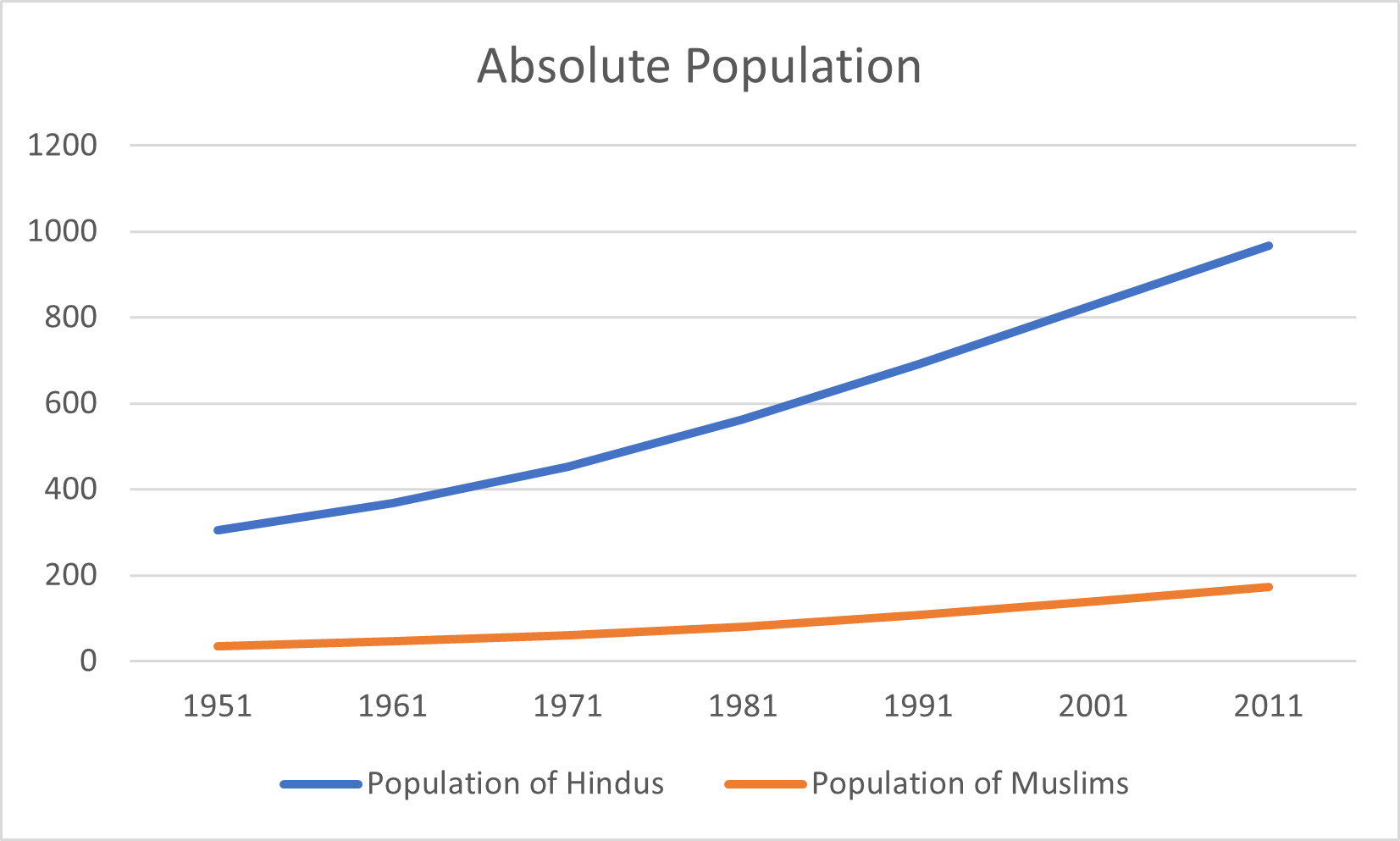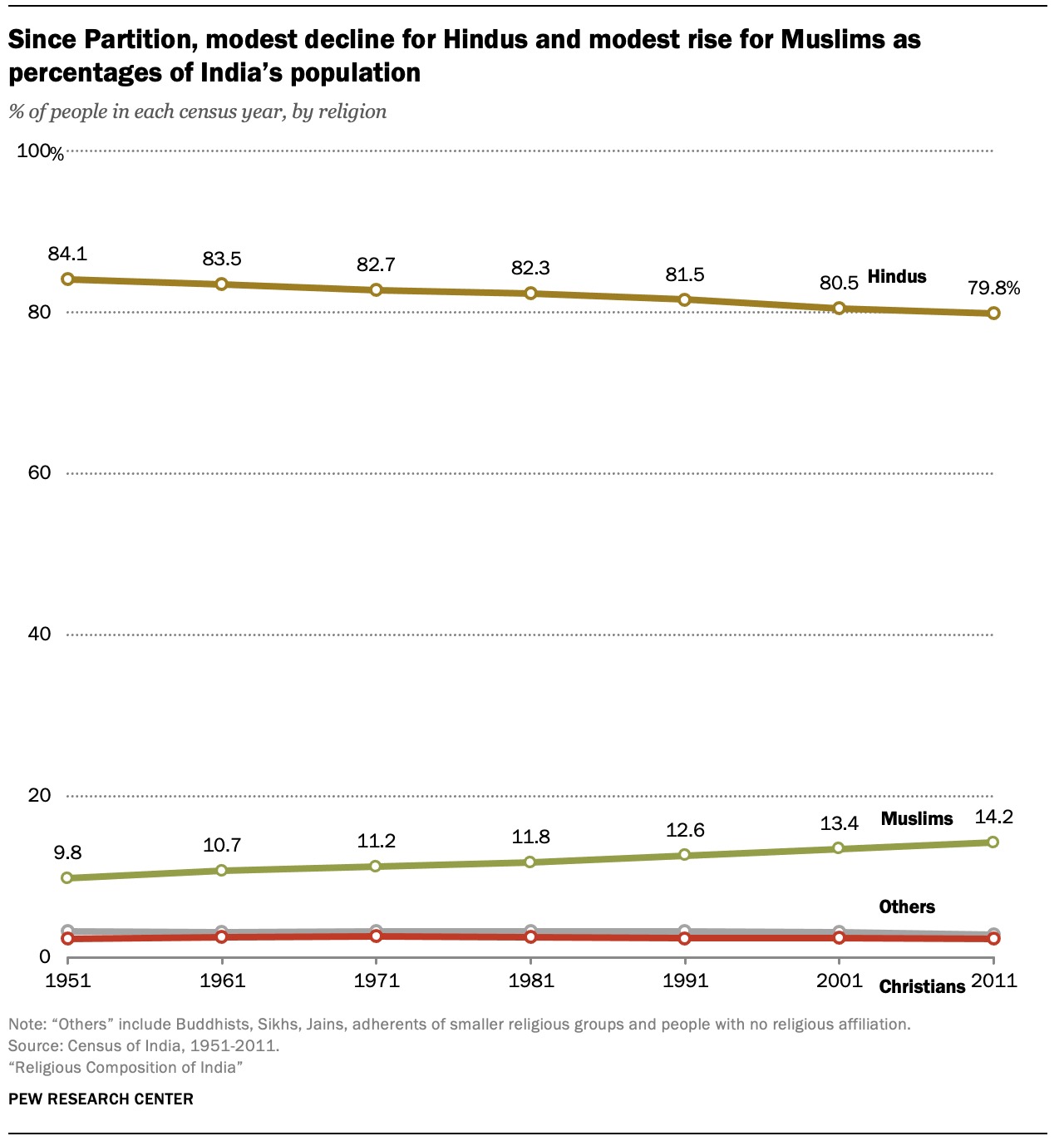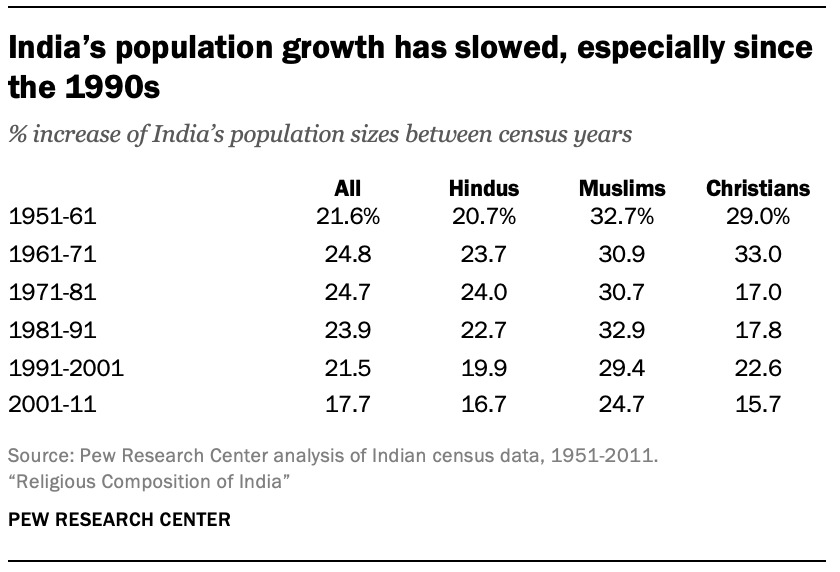On October 11, the Office of Home Minister Amit Shah (@AmitShahOffice) shared Census data from 1951 to 2011, which pointed to a¸steady decline in the share of the Hindu population and a rise in the number of Muslims. It also noted that between 2001 and 2011, the population of Hindus grew at a rate of 16.8%, while that of Muslims grew at 24.6%. The post attributed the disparity in growth to “infiltration.” (Archive)
भारत में आजादी के बाद हुई जनगणनाओं में…
1951 में हिंदू 84.1%, मुस्लिम 9.8%
1971 में हिंदू 82.72%, मुस्लिम 11%
1991 में हिंदू 81%, मुस्लिम 12.12%
2001 में हिंदू 80.5%, मुस्लिम 13.4%
2011 में हिंदू 79%, मुस्लिम 14.2%और वहीं वृद्धि दर की बात करें तो:
2001-2011 में हिंदू जनसंख्या…— Office of Amit Shah (@AmitShahOffice) October 10, 2025
The post comes amid the BJP’s massive efforts to highlight infiltration, illegal migration and promote a pro-Hindutva narrative ahead of polls in Bihar, Assam and West Bengal. Targeting the “threat” of infiltrators or “ghuspethiye“, who the party claims are Muslims, has been a major poll plank for the saffron party.
Also Read | Why PM Modi’s dig at ‘infiltrators’ in Independence Day speech could spell trouble
However, a closer look at the numbers indicates that Shah’s representation of population growth is misleading.
Absolute Numbers
According to the 1951 Census, there were about 30.4 crore Hindus in India — that’s roughly 304 million people. By 2011, the number had gone up to 96.6 crore, or 966 million. The population of Muslims rose from 3.4 crore (34 million) in 1951 to 17.2 crore (172 million) in 2011.

This means that the share of Muslims in India’s population has definitely gone up. However, the gap between the two communities remains wide, as the graph above shows. In fact, the gap between Hindus and Muslims between 1951 and 2011 has increased nearly threefold, going by the absolute numbers of their population.
Rise in Growth Rate of Muslims
According to a 2021 report by the Pew Research Centre, there has been a “modest decline for Hindus and a modest rise for Muslims as percentages of India’s population” since the Partition. The graph below (from the report) indicates this

As one can see, lines representing percentages of Hindus and Muslims as a share of the population appear to converge or close in. For the first time in sixty years, between 2001 and 2011, the population share of Hindus dropped below the 80% mark, whereas the population share of Muslims reached 14.2% in 2011 from 9.8% in 1951.
This rise in percentage of Muslims as a share of the population is what Shah and many other Right-wing supporters have repeated for years — calling it “population jihad” — to further suggest that Muslims are trying to change the demography and overtake Hindus.
But this is only half true.
That’s because the decadal growth rate of Muslims, who are portrayed as rapidly multiplying, is actually slowing down faster than that of Hindus.
Decadal growth rate refers to the percentage rise in population growth over a ten-year period. For example, if a population grows from 1,000 to 1,200 people over ten years, the decadal growth rate is 20%.
The decadal population growth rates of Muslims and Hindus based on Census data are given below.

Based on this, it is clear that the decadal growth rate of the Muslim population is actually falling over a period of time. This means that even if they are growing, their rate of growth has slowed down over the years. Likewise, the decadal growth rate of Hindus is also declining.

Between 1991 and 2011, the decadal growth rate of Muslims fell sharply from 29.4% to 24.7%. Meanwhile, the 10-year growth rate for Hindus fell from 19.9% to 16.7% — a 3.2 percentage-point drop for Hindus versus a 4.7 percentage-point decline for Muslims. Essentially, this disproves what Shah and other Right-wing supporters keep talking about.
It means that the growth of Muslims is actually slowing down faster than Hindus. In other words, both communities are growing at a slower pace and the gap between them is not shrinking rapidly.
The recently published Love Jihad and Other Fictions also counters the claim of rise in Muslims over the years with the help of fertility rates based on National Family Health Survey data. According to the 2019-20 NFHS data, Muslim women had a slightly higher fertility rate (2.36%) compared to Hindu women (1.94%). However, this difference is narrowing over time and has been documented by survey data too.

On ‘Infiltration’ Claims
Also, as Sanjiv Krishan Sood, retired additional director general of Border Security Force, highlighted in his column for The Quint, the alleged surge in the Muslim population in West Bengal and Assam is being misattributed to migration from Bangladesh.
According to Sood, Census data from states made it amply clear that except for Assam in 1961 and West Bengal in 1971, decadal population growth in these two states closely tracked the national average.
Temporary spikes can be explained by historical events — Hindu migration from East Pakistan in the 1950s and the devastation of Cyclone Bhola in the 1960s — while border districts like Malda have historically had large Muslim populations. There is no incentive for migrants to settle in underdeveloped, infrastructure-poor border areas; they are far more likely to move inland for employment.
Official estimates of illegal migrants are unreliable too, which makes Shah’s claims of rise in a certain group’s population due to infiltration dodgy.
Independent journalism that speaks truth to power and is free of corporate and political control is possible only when people start contributing towards the same. Please consider donating towards this endeavour to fight fake news and misinformation.




